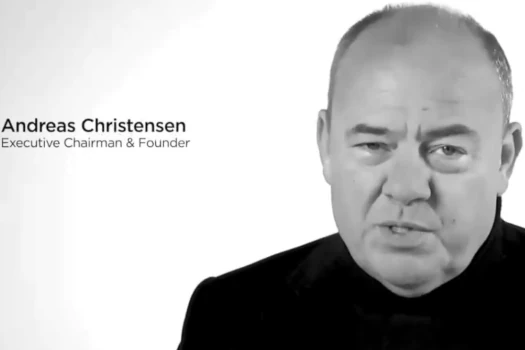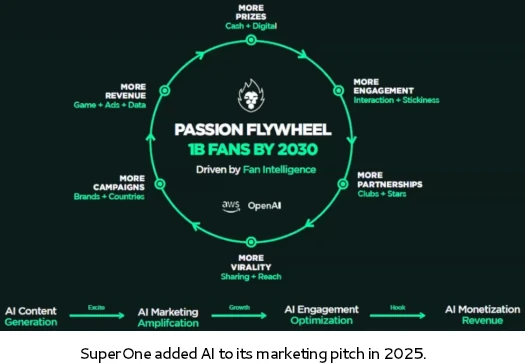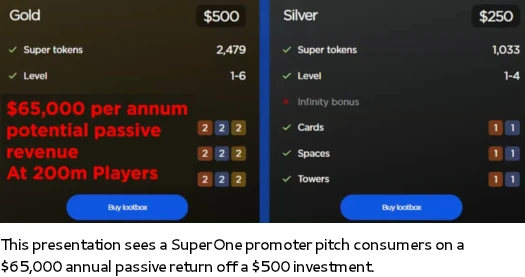SuperOne bagholders still looking for new victims
![]() SuperOne token bagholders (promoters of the Ponzi scheme), are still looking for new victims.
SuperOne token bagholders (promoters of the Ponzi scheme), are still looking for new victims.
SuperOne’s latest marketing grift is jumping on the AI bandwagon.
SuperOne is run by Norwegian national Andreas Christensen.

SuperOne originally launched in 2018 as an ethereum smart-contract MLM crypto Ponzi.
While SuperOne solicited investment in ethereum, returns were paid in its native SuperOne token (SRX).
2 billion SRX tokens have been created out of thin air, half of which Christensen owns.
The original iteration of SuperOne collapsed shortly after launch. Ever since then, Christensen has desperately been trying to lure new bagholders to the scheme. This is required in order for Christensen and early SuperOne promoters to cash out.
We’re now seven years in and, unfortunately for Christensen, thus far nothing has stuck.
The first SuperOne reboot took place in early 2020. Christensen added a trivia and NFTs, then the current crypto fad, to the scam.
The idea was that new trivia app users would eventually spend money, allowing Christensen and the original SuperOne token bagholders to cash out.
SuperOne’s trivia app itself was nothing more than a repurposing of Mowjow, a failed quiz app development company Christensen had launched in 2013.
Circa 2022 SuperOne pivoted to a metaverse marketing grift (by 2022 metaverse was the current crypto fad)
We have released 150,000 NFTs, which will be integrated into the game and the community. And now, we are building up our Fandom Metaverse, where fans can interact, connect, and compete with each other.
None of this went anywhere, prompting Christensen to reboot the Ponzi for a third time in May 2023.
SuperOne’s third reboot saw the general trivia app refocused on sports. The idea was that football fans would be manipulated into thinking answering trivia questions and buying NFTs equated to supporting their club.
Once again this was all done in the hopes Christensen and early SuperOne promoters would be able to offload their SRX token bags onto new victims.
An SRX staking investment scheme was also added to the Ponzi. This of course only compounded the problem of SRX token bagholders having even heavier bags they couldn’t cash out.
As of mid 2025 SuperOne was all but dead. SimilarWeb tracked just ~4800 monthly SuperOne website visits in August 2025.
While nothing much has changed with the dead trivia app iteration of SuperOne, in October a new AI marketing push is being trotted out.

Other than using AI buzzwords in marketing slides, it’s unclear what exactly AI has to do with getting sports fans to buy heavy SRX token bags.
Oh and this is probably a good time to mention that, at some point, SuperOne transitioned from ethereum to XRP. New investment is made in XRP, with SRX still paid out on the backend.
In what appears to be an attempt at pseudo-compliance, SuperOne investments have been branded as “lootboxes”:

Lootboxes are a universally hated gambling mechanic that has carried over from the traditional gaming industry (proper online gaming, not gambling).
The traditional online gaming industry began moving away from lootboxes after Belgium banned them in 2018 – the same year SuperOne launched. Predatory gaming companies however still use the mechanic to empty player’s wallets.
As of September 2025, SimilarWeb was tracking ~28,700 monthly SuperOne website visits.
Curiously, SimilarWeb attributes 100% of SuperOne’s website traffic from Romania. This effectively suggests that, outside of Romania, SuperOne is dead.
Laughingly, after eight years of going nowhere, SuperOne is pitching potential new bagholders on the promise of one billion investors by 2030.

Once Romania is milked of new gullible investors, unless SuperOne quickly finds a new country to exploit, Christensen and SRX token bagholders will be back at square one.


Great to see this write-up, Oz — spot on as usual.
We recently dug even deeper into Andreas Christensen’s real situation and published a full exposé with financial documents, courtroom visuals, and company records confirming what we all suspected: SuperOne is not just a failed crypto fantasy — it’s a sinking ship dragged down by incompetence, unpaid bills, and near-certain bankruptcy.
In our blog, we revealed:
• SuperOne’s auditor flagged tax violations and warned of compulsory dissolution after failing to file 2023 annual accounts.
• Norwegian government records show mounting court fines, ballooning weekly penalties, and a looming dissolution notice dated 14 March 2025.
• Despite all the AI hype, SuperOne is circling the drain — with more debt than cash, fake growth claims, and laughable traffic stats (28,700 visits from Romania only? That’s not traction — that’s desperation).
• We even mocked up a courtroom image of Christensen getting declared bankrupt while The Crypto Ponzi Scheme Avenger sits in the gallery, smirking and taking notes.
Looks like Andreas is down to his last Ponzi pivot — AI lootboxes for football fans in Eastern Europe. If that’s not rock bottom, I don’t know what is.
Thanks again for continuing to call this clown out.
— Danny de Hek aka The Crypto Ponzi Scheme Avenger
Featured in The New York Times, Bloomberg & The Guardian